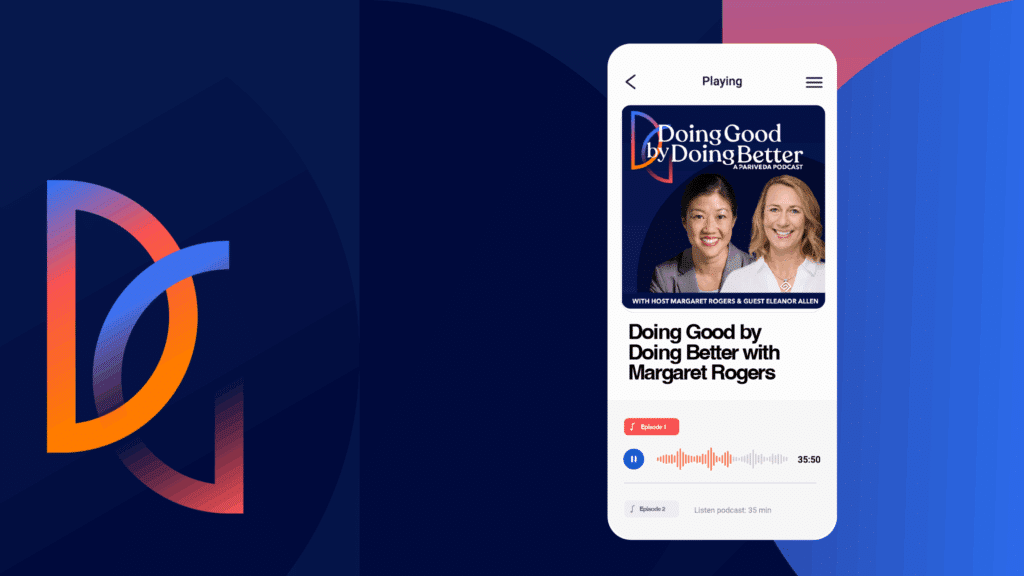Educational technology is a booming ecosystem, with EdTech companies estimated to have raised more than $2.2 billion worth of funding in 2020. But that doesn’t mean leaders should rest on this gold mine. It still requires them and their teams to be continually looking for new ways to improve the student experience.
That quest naturally comes with some significant challenges. To make real progress in the EdTech space and to better serve the students’ needs, these challenges need to be surmounted smartly and efficiently.
One common pitfall is relying on the lazy approach of repackaging old material — especially material never intended for a digital-first approach. Two clear examples of that are classroom slides and PDF versions of textbooks.
Another unhelpful practice is failing to design for the user. In EdTech, one size does not fit all. It’s critical to honor the fact that a 9-year-old has a very different comfort level with online tools from a 42-year-old, and both have different needs from a fresh-out-of-college teacher — who obviously differs greatly from a college professor who’s been teaching for four decades. The potential variables are nearly endless.
Lack of production quality is also a critical issue. Even though they all approach the EdTech user experience from different angles, all parties — students, administrators, and educators — have high expectations of what production quality should look like. We live in a world in which students can trivially call up engaging content on TikTok, which sets the bar higher for everyone in the EdTech ecosystem. Content doesn’t have to be high-budget, but it does have to be made intentionally and absolutely must be engaging.
This last point about engagement isn’t lost on many EdTech players. A growing number of institutions and platforms are using high-quality videos, animations, and interactive components to capture the attention of learners. Better engagement results in better learning, especially over sterile content such as mere text.
How these challenges affect learning and perception of the platform
When the customer experience falters, it has negative effects on the entire learning mission. For example, in K-12 settings, teachers have known for centuries that it’s a tremendous challenge to engage with students and communicate in a way that allows them to retain knowledge. But mediocre formats delivered through an EdTech platform make the mission so much harder.
The consensus seems to be that for younger children, structure and engagement are critical to success because distraction is always a concern. For that reason, EdTech that fosters engagement and inclusion is most likely to keep students focused on the work and the learning happening.
The situation doesn’t get any less high-stakes at the level of higher education. In that competitive landscape, colleges and universities must compete fiercely to attract — and, just as important, retain — the best and brightest students. To do that, they have no choice but strive to provide both flexibility and a truly exceptional digital experience.
Regardless of the age or educational level of students, every learner is unique. As such, EdTech platforms need to maintain focus on the needs that matter the most. Achieving that effectively will set up students and educators (and their institutions) for success.
As an example, consider two-factor authentication. Sure, that’s a security best practice, but it may be very difficult for a younger user who may not have ready access to a separate device (phone, email), especially in lower-income households. These households are also harmed when EdTech companies design for desktops only because some students have to rely on their smartphones for accessing the internet.
One survey found that essentially all self-identified “privileged” students (ones from higher socio-economic families) had access to a desktop computer, but only 25% of so-called “disadvantaged” students did. During the pandemic, many schools offered tablets or other devices, but it’s not clear that will continue with students back to in-person learning. Without a broad approach to learning platforms, some of our most vulnerable students may be left out.
Another issue in terms of differences in learners is cheating. The nature of cheating is very different depending on age group. Whereas younger students may copy each other’s answers, college-level cheating is more sophisticated, such as using paid essay-writing services instead of composing their own papers or obtaining previous versions of exams. Balancing openness and fairness is critical for equity, and so EdTechs need to think carefully about how to best respond to this issue.
But what about the perception of the EdTech platform by educators? They have very different needs from students: creating and presenting content, checking attendance, promoting engagement, reviewing and grading assignments, and ultimately measuring educational progress.
EdTech presents new challenges and opportunities for all these areas. Regarding engagement, we still need to find better metrics than merely which students showed up to a Zoom class. Software is ideal for keeping track of things, but it only works when good human thinking has gone into it — thinking informed by pedagogical reality. Imagining your own positive experiences in the virtual world, quick polls, engaging videos, breakout rooms, virtual sketching, and other ways you’ve been drawn in and found yourself truly engaged.
Even if educators’ needs are met in terms of the tasks they need to complete, this doesn’t mean that they will be able to automatically make full use of an EdTech platform. In fact, most educators have no experience in creating high-quality digital content — never mind engaging, viral, or unique digital experiences. But EdTech done right is a great opportunity to enable them by guiding, teaching, and providing tools and services to assist them. They don’t want to become film directors, but they do want to teach effectively.
Educators have enough challenges forging content during normal times, but it has been so much harder for them during the pandemic when we were all thrust into a new reality. We’re still adapting to that disruption. It’s both a concern for students falling behind but also an opportunity for positive change. EdTech should be there to help make this transition a success.
Three questions every EdTech leader needs to consider
Taken all together, that’s a tall order! No one thought the move to virtual would be trivial, but it’s easy to get overwhelmed. It helps to first get a bird’s-eye view of the landscape to see how best to design and implement solutions within it. To do that, let’s review a few questions that can crystallize what is important to pay attention to — now, and in the years to come.
Who are my users?
Compared to many business ecosystems, EdTech is an especially complicated domain because of the various stakeholders involved. Each has different needs and perspectives.
To get a clearer sense of this, imagine a college campus and think of all the different roles you’ll need to account for: student and professor, of course, but also department chairs, teacher assistants, the registrar’s office staff, guest lecturers, and then many staff members from IT, marketing, communications, and finance, as well as many other community members. Mapping out the users and developing empathy for their needs will create an exceptional experience that doesn’t leave anyone out.
Before you get underway with any specific initiatives or long-term plans with an educational institution, first be sure to map out and build an understanding of all the stakeholders for your customer market. For example, if you’re in the K-12 realm, then state legislatures, PTAs, and other indirect stakeholders will both have an impact on your product, platform, or service and will also be impacted by it. Their buy-in may make or break your business model or the perception of your product or service.
How am I aligned with the educators and students?
Whether a for-profit or a not-for-profit venture, business interests are typically not perfectly aligned with those of an individual university or school district, so it’s important to think carefully and comprehensively about all the parameters important to your client. For a university, such factors might be regional reputation, the ability to help students find jobs, and its publishing and research. The students themselves will have different concerns, such as juggling school and their personal lives, doing well in courses, and getting applicable experience.
When EdTech businesses understand these needs, they can better align interests. That will help to shape relationships that meet deep-seated needs, preventing the relationships from souring over time. Instead, proper alignment should create a virtuous cycle of growth and success.
The best way to do that is to elicit feedback from all direct stakeholders. For example, you may wonder whether the school administrators have what they need from your dashboard view. Be sure to ask them and test it with them. Sure, it may be easy to get feedback by proxy having teachers and students be your only testers, but they won’t know what it’s like to be a registrar or an administrator or a marketer. Therefore, you must test the features that impact those people with them.
You should also think in terms of collaboratively setting realistic strategic goals. After the pandemic is entirely over — when at-home virtual learning isn’t a mandate anywhere — schools will seek to gain very tangible strategic value and benefit that may or may not perfectly align with your business goals or revenue model. Now is the time for you to set up strategic goals and incentives that put everyone on the same page and aiming for the same outcomes.
What is my business model?
Speaking of business models, do you know exactly what yours is? EdTech is a rapidly evolving and competitive field, so there is little room to just “wing it” and improvise how you generate revenue. Successful companies know exactly what their service or product offerings are and how they can benefit their clients.
It’s equally important to understand what areas you are not serving. Without that constraint, scope creep can bog down your efforts and, when you inevitably can’t fulfill a client expectation, end up disappointing and alienating clients.
The point is, do the thinking first. There are no limits to how you might deliver value. For example, as virtual learning continues to evolve, we’ll see similar offerings as the “as-a-service” model in IT. Some firms will want to simply reuse a university’s name for their own presentation, content, and students. Others will offer full-service production and a platform for the university or school’s educators and students. Some may provide the underlying infrastructure or platform and enable universities or schools to plan, produce, and deliver the content they want. Finally, others may only be an add-on to a bigger piece of the virtual offering, such as video recording services or transcription services.
Take our work with Stride as a glowing example of how to properly scale. Pariveda worked alongside Stride and AWS to develop a multiphased plan to migrate the for-profit education company’s entire infrastructure to AWS with a non-homogenous cloud architecture. This effort has allowed Stride to scale up quickly during COVID-19 while also providing long-term cost savings as compared to their previous on-premises data center.
Get started with your EdTech future
The bottom line: Every educational setting will have different needs and capabilities, and clearly communicating what layers a product, platform, or service offers will make all the difference to effective collaboration. It can even be the difference between educators rejecting or embracing your platform.
Consider how some teachers may feel if they perceive an EdTech platform is meant to replace them as educators rather than enhance their effectiveness. Through not just good communication but “educating the educators,” you can allay those concerns before they get too entrenched while creating real enthusiasm and anticipation for the benefits of your platform.
What applies to teachers applies similarly to administrators, parents, IT department professionals, and, of course, the students themselves. Never doubt that effective communication is the foundation of adoption and success for an EdTech offering.
EdTech is a booming opportunity, but one that can be squandered without proper planning and effective communication with all stakeholders. Start now with clear communication to assess your clients’ needs, discovering how your goals align and how your business model will thrive. By doing this, you develop lasting and fruitful relationships with clients, providing value to their educational efforts, not just in the endgame of the pandemic, but for many years to come.


















